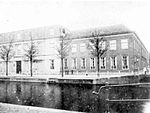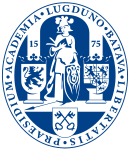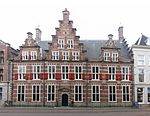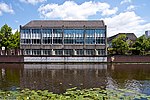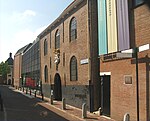Rijksmuseum van Oudheden
1743 establishments in EuropeArchaeological museums in the NetherlandsEgyptological collectionsMuseums in LeidenMuseums of Ancient Near East ... and 4 more
Museums of ancient Greece in the NetherlandsMuseums of ancient Rome in the NetherlandsNational archaeological organizationsNational museums of the Netherlands

The Rijksmuseum van Oudheden (English: National Museum of Antiquities) is the national archaeological museum of the Netherlands, located in Leiden. It grew out of the collection of Leiden University and still closely co-operates with its Faculty of Archaeology. The museum calls itself "the national centre for archaeology" and focuses on ancient Egypt, the ancient Near East, the classical world of Greece, Etruria and Rome and the early (prehistoric, Roman and Medieval) Netherlands.
Excerpt from the Wikipedia article Rijksmuseum van Oudheden (License: CC BY-SA 3.0, Authors, Images).Rijksmuseum van Oudheden
Houtstraat, Leiden
Geographical coordinates (GPS) Address Nearby Places Show on map
Geographical coordinates (GPS)
| Latitude | Longitude |
|---|---|
| N 52.158333333333 ° | E 4.4858333333333 ° |
Address
Houtstraat 1
2311 TE Leiden
South Holland, Netherlands
Open on Google Maps
